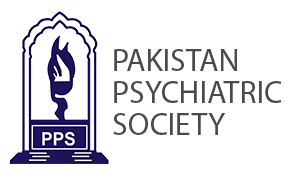MAJOR DEPRESSIVE DISORDER, ENVIRONMENTAL FACTORS AND EPIGENETICS
Abstract
New insights in the epigenetics have declared depression as genetic malady. For psychiatric disorders evaluation of epigenetic basis influenced by environment insults showed deeper understanding of complex multifactorial psychiatric disorder like Major depressive disorder (MDD). The World Health Organization (2008 report) has ranked MDD globally as the third cause of burden of diseases and predicted it to be the number one by 2030. Eight hallmarks of insults that lead to MDD are contaminated air, soil, food/water, ecological stressors, chemicals in households, occupational hazards as well as food/diet linked to absence of essential nutrients. Epigenetics, according to National Human Genome Research Institute, refers to changes in gene function causing their activation or deactivation without any alteration in DNA sequence. Epigenetics include histone modifications, DNA methylations, miRNAs and lncRNAs. Hypermethylation of serotonin transporter gene has been consistently found in loci encoding brain derived neurotrophic factors BDNF and SLC6A4. During pregnancy fetal epigenetic reprogramming may occur due to maternal stress and nutritional restriction. Increased cortisol or malnutrition in mothers, down-regulate cortisol enzyme, decreasing its expression in fetal cortex, making these children 4 times more at risk to stress later in life. Histones modifications including methylation and acetylation at lysine moiety during posttranslational modifications, affect neurons of CNS significantly leading to pathophysiology of MDD. Dysregulation of miRNAs and lncRNAs cause negative neural plasticity, stress responses, neurotrophic factors expression, neuroinflammation, neurotransmission, HPA axis, neurogenesis and gliogenesis and neural stem cell maintenance. Among epigenetic multifactorial disorders, psychiatric ailments have received prominence in etiology than other diseases.
Downloads
References
Lopizzo N, BocchioChiavetto L, Cattane N, et al. Gene-environment interaction in major depression: focus on experience-dependent biological systems. Front Psychiatry. 2015;6:68.doi:10.3389/fpsyt.2015.00068
Booij SH, Bos EH, de Jonge P, Oldehinkel AJ. Markers of stress and inflammation as potential mediators of the relationship between exercise and depressive symptoms: findings from the TRAILS study. Psychophysiology. 2015;52(3):352-358. doi:10.1111/psyp.12329
Brook CA, Schmidt LA. Social anxiety disorder: a review of environmental risk factors. Neuropsychiatr Dis Treat. 2008;4(1):123-143. doi:10.2147/ndt.s1799
Garner AS, Shonkoff JP; Committee on Psychosocial Aspects of Child and Family Health; Committee on Early Childhood, Adoption, and Dependent Care; Section on Developmental and Behavioral Pediatrics. Early childhood adversity, toxic stress, and the role of the pediatrician: translating developmental science into lifelong health. Pediatrics. 2012;129(1):e224-e231. doi:10.1542/peds.2011-2662
Caspi A, Sugden K, Moffitt TE, et al. Influence of life stress on depression: moderation by a polymorphism in the 5-HTT gene. Science. 2003;301(5631):386-389. doi:10.1126/science.1083968
National Human Genome Research Institute (NIH). Epigenetics. Available online at: https://www.genome.gov/genetics-glossary/Epigenetics (accessed January 12, 2022).
Ortega MA, Alvarez-Mon MA, García-Montero C, et al. MicroRNAs as Critical Biomarkers of Major Depressive Disorder: A Comprehensive Perspective. Biomedicines. 2021;9(11):1659.doi:10.3390/biomedicines9111659
Penner-Goeke S, Binder EB. Epigenetics and depression . Dialogues Clin Neurosci. 2019;21(4):397-405. doi:10.31887/DCNS.2019.21.4/ebinder
Zhu P, Wang W, Zuo R, Sun K. Mechanisms for establishment of the placental glucocorticoid barrier, a guard for life. Cell Mol Life Sci. 2019;76(1):13-26. doi:10.1007/s00018-018-2918-5
Peña CJ, Nestler EJ. Progress in Epigenetics of Depression. Prog Mol Biol Transl Sci. 2018;157:41-66. doi:10.1016/bs.pmbts.2017.12.011
Zhou L, Zhu Y, Chen W, Tang Y. Emerging role of microRNAs in major depressive disorder and its implication on diagnosis and therapeutic response. J Affect Disord. 2021;286:80-86. doi:10.1016/j.jad.2021.02.063
Copyright © JPPS. Published by Pakistan Psychiatric Society
Licensing: This work is licensed under Creative Commons Attribution-NonCommercial 4.0 International License
Readers may “Share-copy and redistribute the material in any medium or format” and “Adapt-remix, transform, and build upon the material”. The readers must give appropriate credit to the source of the material and indicate if changes were made to the material. Readers may not use the material for commercial purposes. The readers may not apply legal terms or technological measures that legally restrict others from doing anything the license permits.






.png)









